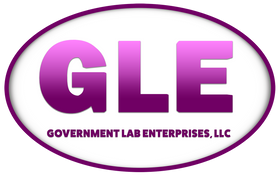When it comes to conducting experiments and ensuring smooth operations in a laboratory, cleaning becomes vital in ensuring the fitness and quality of your lab work and the professionals working there. Regardless of high investment in quality labware like cell-treat scientific products, many laboratories still rely on traditional laboratory cleaning methods and old techniques to save an increase in costs.
THE PROBLEM
Conventional cleaning method of mopping that increase the risk of touchpoints for contamination and greater employee health risks. This includes:
- Disposal of dirty water solution
- Rinsing and wringing mops
- Cleaning and sanitizing the equipment
- Attaching clean mops
- Exposure to chemical wafts while cleaning
The major disadvantage of this process is reusing the same dirty water to clean a new dirty surface.
The solution to this problem is investing in a smart cleaning device. Thanks to the advent of technology, products are available in the market that offers hands-free mop attachment feature, sealed cleaning solution reservoir to avoid reusing the same solution for cleaning different surfaces, self-rinsing, and wringing feature, among others.
Another danger posing in this activity is the carelessness of storage and other practices. Many professionals aren’t aware of the health aspect associated with their job and the appropriate measures they need to take to ensure safety standards for everyone. Following are a few suggestions that should be incorporated across every laboratory:
- Storing chemical cleaning bottles and reactive products away from the duct of HVAC vents. This helps prevent the spread of chemical fumes to other areas of the lab
- Installing precautionary signage to convey the possible risk and danger of mishandling certain chemicals
- Keeping all the chemicals in their original containers
- Preventing mixing chemicals regardless of their similarity in composition
- Maintaining material data sheets to keep track of the usage of different chemicals
- Creating a record of every chemical available in the facility for cleaning
- Safety and responsibly getting rid of all chemicals that haven’t been used for a long time or have expired. A good thumb rule is to dispose of any chemical that hasn’t been used for six months or a year.
Apart from this, a laboratory must encourage its workers to wear personal protective equipment, including glasses, gloves, boots, aprons, to prevent burns, irritation, and any other harmful damage while handling severely toxic chemicals.
Poor housekeeping not only risks those in direct contact with cleaning chemicals but also disturbs the workflow and functioning of laboratory space. Some of the other malpractices include:
- Stacking of beakers and containers
- Careless disposal of broken glassware and sharp objects
- Not labeling chemical solutions properly
- Keeping hallway doors open thus, leading to the spread of hazardous fumes during cleaning due to positive airflow
- Leaving water spills and using signage till a wet surface dries leading to accidents and trips
- Not being mindful around electrical sockets and circuits while mopping or any other cleaning activity
It’s fair to say that good housekeeping and maintenance of quality cleaning standards are not just the responsibility of the cleaning staff. Everyone has a role to play.
If you are looking for some high-grade lab equipment and quality labware from reputed brands in new or refurbished condition, browse our website today to have a look at our collection at discounted prices.

